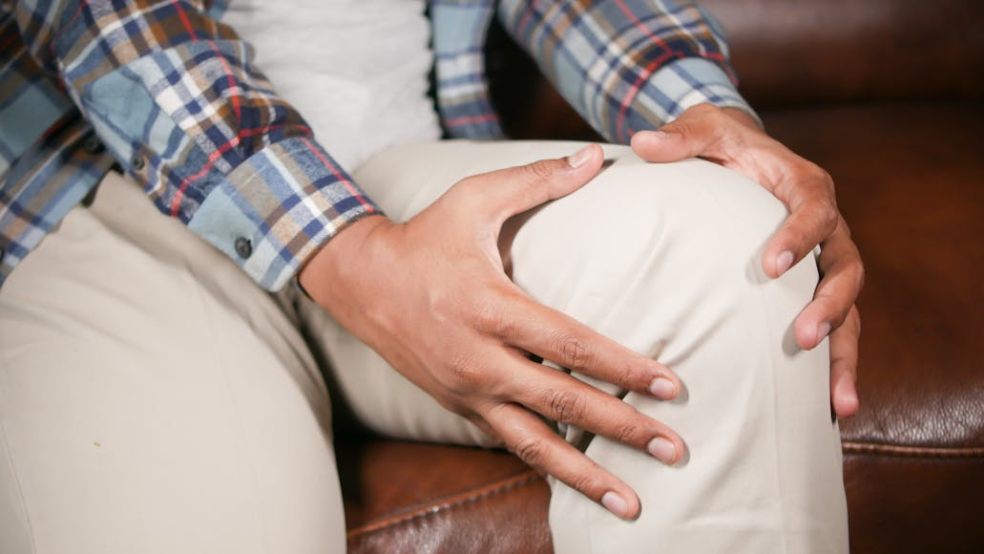
Winter Wellness: How Cannabis-Based Treatments Can Help Beat Seasonal Aches
Winter has a way of creeping into our joints, muscles, and even our moods, especially for those already coping with chronic discomfort. Colder air can tighten tissues, while shorter days often leave us feeling sluggish or less motivated to stay active. Many people notice flare-ups in joint stiffness and general aches when temperatures drop, and while hot water bottles or over-the-counter anti-inflammatories may help, they don’t always address the core issues that worsen in the cold.
This has pushed many to consider using cannabis treatments for arthritis, while others want to find the best cannabis clinics for guidance on specialised treatments.
Anecdotal reports suggest benefits like improved mobility and reduced pain, positioning medical cannabis as a promising cold-weather ally. Yet, as with any emerging therapy, a balanced look at the science, alongside practical considerations, remains essential to ensure both safety and effectiveness.
Why do winter aches affect us so much?
Colder weather can pose a host of challenges, particularly for those prone to arthritis or chronic back pain. Shifts in barometric pressure may cause joint tissues to swell, magnifying pain. Muscles also tense up in response to the cold, reducing blood flow and leading to stiffness. Meanwhile, we tend to move less when it’s freezing out—rain, sleet, and icy conditions aren’t exactly motivating.
Even those in generally good health can find their aches resurfacing. Athletes who cut back on outdoor training might feel tightness in their calves, while office workers who skip short walks in favour of staying warm may notice back or neck pain intensifying. Winter’s shorter days also play a psychological role, often lowering motivation to exercise or maintain a varied workout routine. The result? Discomfort that easily becomes a season-long companion.
The endocannabinoid system: your body's internal regulator
Central to the discussion of cannabis-based treatments is the endocannabinoid system (ECS). Acting as an internal regulatory network, the ECS helps balance processes such as mood, pain perception, and immune response. Two main receptors—CB1 and CB2—work in tandem with endocannabinoids our bodies produce naturally, and these same receptors also respond to cannabinoids found in the cannabis plant.
CBD (cannabidiol) is thought to modulate inflammation, an effect that could prove useful when cold weather exacerbates joint and muscle pain. THC (tetrahydrocannabinol), meanwhile, may alter the way the brain perceives pain, potentially easing winter aches. Of course, everyone’s chemistry is unique, so not every individual will respond identically. That variability is one reason why medical guidance and mindful experimentation are key.
Cannabis-based treatments for seasonal pain
Cannabis-based treatments span a wide spectrum, from prescribed medical cannabis to over-the-counter CBD oils or topicals. Though scientific studies are still evolving, preliminary evidence suggests several ways they might soothe seasonal discomfort:
- Reducing inflammation: Inflammation often spikes in the cold, worsening pain. CBD-heavy products may help modulate these inflammatory responses without causing a pronounced psychoactive effect.
- Relaxing muscle tension: Cold can make muscles contract and stiffen. Certain cannabis strains with balanced ratios of THC and CBD might encourage relaxation, supporting easier movement.
- Supporting better sleep: Quality rest is paramount for healing, yet winter’s gloom can disrupt circadian rhythms. Many report improved sleep patterns when using cannabis, indirectly aiding recovery from cold-induced aches.
A closer look at arthritis and chronic pain
Individuals with arthritis frequently face a tougher challenge during colder months, as joint inflammation often flares up. Emerging studies on cannabis-based therapies for arthritis have shown encouraging (though not yet conclusive) findings. Some patients describe reduced swelling, increased flexibility, and a decreased reliance on traditional painkillers after incorporating cannabis into their pain management routines.
Still, definitive clinical evidence is limited. Most data come from observational studies or smaller trials that don’t always provide the level of rigour needed to form universal recommendations. Variables like the specific type of arthritis, overall health profile, and genetics can influence outcomes. As a result, while the potential is undeniable, personalisation and professional oversight remain critical for anyone considering this route.
Seasonal affective disorder and mood
Winter wellness isn’t just about relieving physical pain—mood plays a significant role too. Seasonal affective disorder (SAD) can coincide with physical aches, creating a cycle where discomfort lowers activity levels and gloominess curtails motivation. Here, certain cannabis strains might offer support through mood elevation or stress reduction.
However, the impact of cannabis on mood is highly individual. While some people find relief from low-grade depression or anxiety with THC, others may experience heightened nervousness if the dose is too high. CBD, often regarded for its calming properties, could be an alternative for those seeking mood support without strong psychoactive effects. In each case, understanding personal tolerance and seeking professional advice can help prevent unintended outcomes.
Safety and side effects
Although cannabis is increasingly lauded as a natural remedy, it’s not devoid of potential risks. Large doses of THC might trigger anxiety or disorientation, particularly for those already feeling on edge due to winter stress. Moreover, ADHD-like restlessness or general impulsivity can exacerbate the likelihood of overuse or dependency if not monitored.
Medication interactions also pose a concern. Individuals managing chronic illnesses like heart disease or diabetes should tread carefully when mixing cannabis with existing drug regimens. Speaking to a specialist well-versed in cannabis prescribing is therefore essential to balance the benefits against these possible pitfalls.
Integrating cannabis into a winter wellness routine
If you’re considering adding cannabis-based treatments to your winter regimen, start low and go slow. Microdosing can help gauge individual reactions, reducing the chance of side effects. Whenever possible, opt for lab-tested products that clearly disclose cannabinoid levels and purity.
For maximum benefit, combine cannabis with holistic strategies. Gentle exercise, regular stretching, and even low-impact activities like yoga can counteract winter’s stiffening effects. A nutrient-rich diet further fortifies the body, while adequate hydration keeps joints lubricated. A journal documenting doses, times, and the specific product used can be invaluable, enabling you to refine your approach and identify what truly works.
The road ahead: research and outlook
Interest in cannabis-based treatments is steadily climbing, leading to broader, more rigorous clinical trials each year. Researchers are exploring how different cannabinoid profiles might address specific conditions—a development that could transform the way individuals manage winter aches, among other ailments. Innovations like sustained-release capsules and more efficient topical formulas also promise to enhance precision.
However, a cautious optimism is warranted. Regulatory frameworks and public perception still lag behind the pace of scientific discovery. In many regions, navigating the legalities of obtaining and using cannabis can be complex, slowing down both research and patient access. Despite these hurdles, the potential reward—a safe, natural tool for easing winter discomfort—remains a compelling reason for continued inquiry.
Conclusion
Winter’s colder days and longer nights can cast a shadow over our physical and emotional well-being, magnifying aches and draining motivation. But as the evidence around cannabis-based treatments grows, so too does our capacity to adapt and thrive in the chillier months. Whether by reducing inflammation, promoting better sleep, or bolstering mood, cannabis may be poised to play a notable role in helping us endure winter’s challenges with greater ease.
Of course, no single approach will work for everyone. Individual chemistry, medical history, and lifestyle factors all shape how—and whether—cannabis proves beneficial. With professional guidance, conscientious self-monitoring, and an openness to complementary practices, people can decide if this plant-based therapy is a worthy addition to their winter wellness toolkit. Winter might still nip at our heels, but armed with knowledge and a willingness to experiment safely, we can remain one step ahead of the season’s aches.
To learn more about the potential that medical cannabis holds in treating arthritis, check out the links in the intro.













